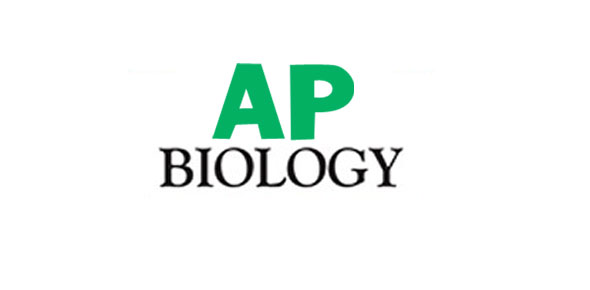A&p Exam For Biology And Chemistry

For A&P exam 1 excluding Intro to
- 1.
What are the 4 types of tissues found in the Body?
- A.
Blood, Nerve, Epithelial, Skeletal
- B.
Epihelial, Nerve, Muscle, Bone
- C.
Epithelial, Nerve, Connective, Muscle
- D.
Connective, Bone, Skin, Blood
Correct Answer
C. Epithelial, Nerve, Connective, MuscleExplanation
The correct answer is Epithelial, Nerve, Connective, Muscle. These are the four main types of tissues found in the body. Epithelial tissue covers the surfaces of organs and lines cavities. Nerve tissue allows for communication and coordination within the body. Connective tissue provides support and connects different structures. Muscle tissue is responsible for movement and contraction.Rate this question:
-
- 2.
This type of tissue covers exposed surfaces, lines internal passageways & chambers, and forms glands
- A.
Skin
- B.
Connective Tissue
- C.
Epithelial Tissue
- D.
Nerve Tissue
Correct Answer
C. Epithelial TissueExplanation
Epithelial tissue is the correct answer because it covers exposed surfaces, lines internal passageways and chambers, and forms glands. Epithelial tissue is found in various parts of the body, such as the skin, respiratory tract, digestive tract, and glands. It serves as a protective barrier, helps with absorption and secretion, and plays a crucial role in maintaining the integrity and function of organs and tissues.Rate this question:
-
- 3.
What are the three types of epithelial cell junctions
- A.
Tight, Gap, Macula Adherens
- B.
Macula Adherens, Junctions, Gap
- C.
Gap, Loose, Tight
Correct Answer
A. Tight, Gap, Macula AdherensExplanation
The correct answer is Tight, Gap, Macula Adherens. These are the three types of epithelial cell junctions. Tight junctions are responsible for creating a barrier between cells, preventing the movement of molecules between them. Gap junctions allow for communication and exchange of small molecules between cells. Macula adherens, also known as desmosomes, are responsible for cell-cell adhesion and provide structural support to tissues.Rate this question:
-
- 4.
__________cells function to:-Protect-Control permeability-Provide Sensation-Produce secretions
Correct Answer
EpithelialExplanation
Epithelial cells function to protect the underlying tissues and organs, control the permeability of substances, provide sensation through specialized cells like taste buds and hair cells, and produce secretions such as mucus and enzymes. They form the outermost layer of the skin and line the internal organs, acting as a barrier against pathogens, toxins, and physical damage. Epithelial cells also regulate the movement of substances in and out of tissues and organs, allowing for selective absorption and secretion. Additionally, they contain specialized cells that detect sensations like touch, taste, and smell. Finally, certain epithelial cells produce secretions that are essential for various bodily functions.Rate this question:
- 5.
This type of Epithelim cell has one layer and flat like eggs
- A.
Stratified Cuboidal
- B.
Simple Cuboidal
- C.
Simple Columnar
- D.
Simple Squamous
Correct Answer
D. Simple SquamousExplanation
Simple squamous epithelial cells are characterized by having a single layer of flattened cells, resembling the shape of eggs. These cells are thin and allow for easy diffusion of gases and molecules across their surface. They are commonly found in areas where passive diffusion is important, such as the lining of blood vessels, air sacs in the lungs, and the lining of the kidneys.Rate this question:
-
- 6.
What is this type of epithelial cell?Location-Glands, ducts; portions of kidey tubules; thyroid glandsFunction-Limited protection, secretion, absorption
- A.
Simple Cuboidal
- B.
Simple Squamous
- C.
Simple Columnar
- D.
Stratified Cuboidal
Correct Answer
A. Simple CuboidalExplanation
Simple cuboidal epithelial cells are found in glands, ducts, portions of kidney tubules, and thyroid glands. They have a cube-like shape and a single layer of cells. These cells provide limited protection, as well as secretion and absorption functions.Rate this question:
-
- 7.
This type of epithelial tissue lines the nasal cavity, trachea and bronchi
- A.
Transitional Epithelium
- B.
Pseudostratified Ciliated Columnar Epithelium
- C.
Stratified Squamous Epithelium
- D.
Stratified Columnar Epithelium
Correct Answer
B. Pseudostratified Ciliated Columnar EpitheliumExplanation
Pseudostratified ciliated columnar epithelium is the correct answer because it is the type of epithelial tissue that lines the nasal cavity, trachea, and bronchi. This type of tissue appears to be stratified due to the varying heights of the cells, but in reality, all cells are anchored to the basement membrane. It is ciliated, meaning it has tiny hair-like structures called cilia that help to move mucus and trapped particles out of the respiratory tract.Rate this question:
-
Quiz Review Timeline +
Our quizzes are rigorously reviewed, monitored and continuously updated by our expert board to maintain accuracy, relevance, and timeliness.
-
Current Version
-
Mar 20, 2023Quiz Edited by
ProProfs Editorial Team -
Feb 02, 2011Quiz Created by
Eiba8002
 Back to top
Back to top


